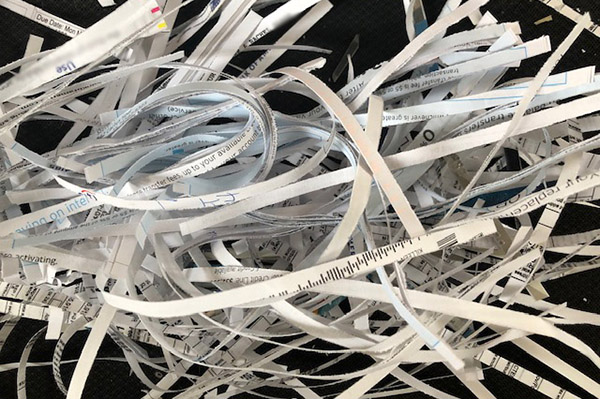Records Management
Texas A&M-Central Texas maintains an active and ongoing records management program as required by Texas Government Code §441 and Texas A&M System Regulation 61.99.01. This program is designed to identify, preserve and protect state records in a consistent, efficient, and economical manner.
For the records management program to be effective, University departments must establish an effective records management program and have in place management plans that best suit them. Departments are responsible for their own records retention, storage and timely disposal, but must comply with applicable state laws, system regulations and university procedures for records management.
What is Records Management?
Texas Administrative Code §441.180(7) defines Records Management as "the application of management techniques to the creation, use, maintenance, retention, preservation, and disposition of records for the purposes of improving the efficiency of record keeping, ensuring access to public information under the Public Information Act, and reducing costs." System Regulation 61.99.01 and University Standard Administrative Procedure 61.99.01.D1.01 establishes the requirements and processes of records management at Texas A&M-Central Texas.
All questions related to records management at TAMUCT should be directed to:
-

Institutional Compliance
-
- Email: compliance@tamuct.edu
- Phone: 254.519.5763
- Fax: 254.519.8011
- Founders Hall Room 317
- 1001 Leadership Place
- Killeen, Texas 76549
-
Records Retention Schedule
The Texas A&M University System Record Retention Schedule is recertified every 3 years by the Texas State Library and Archives Commission. It contains the most common records series and specifies how long each record must be retained by the university before it can be disposed of or considered for archival preservation. We encourage you to not print this schedule or save to your computer. The Institutional Compliance website will always have the current version of the schedule.
The Record Retention Schedule is divided into seven sections. You may view the entire schedule or select a section here:
- Records Retention Schedule 1 - Administration Records
- Records Retention Schedule 2 - Electronic Data Processing Records
- Records Retention Schedule 3 - Personnel Records
- Records Retention Schedule 4 - Fiscal Records
- Records Retention Schedule 5 - Support Services Records
- Records Retention Schedule 6 - Student Records
- Records Retention Schedule 7 - Agency Program Records
- Record Retention Schedule (All 7 Sections)
*If you have any questions about disposition methods or process or are unable to locate your record in the Record Retention Schedule, please reach out to our office at compliance@tamuct.edu or 254.519.5763.
Disposition Methods
State records may be disposed of in one of two ways:
- Archival Preservation: If a record is designated in the Record Retention Schedule as one which should be kept as an archival record, reviewed by the University Archivist, or if a department believes that a record should be kept for archival purposes requests consideration that it be placed in the university archives, the department should complete the Record Disposition Request (in Dynamic Form). Record Disposition Requests are necessary for both records that have been designated as archival records and for records that have been designated for destruction per the Retention Schedule.
- If a record is being sent to the archives for preservation, then a Records Disposition Form is required.
- You cannot submit records for archive and disposition on the same form, each manner of disposition requires its own form.
- Archive requests must route to and be approved by both the University Records Officer and the Archivist before the records are routed to the university archive.
- If a record has an archival code to be reviewed by the archivist, it will still follow this same process.
- If the Archivist reviews the records and determines they do not need to be archived, they will be routed back to the requestor to request disposition.
- Please document in this binder and notify the Records Officer which records have been reviewed and rejected by the Archivist for archive. Future copies will not need to be routed to the archivist for review.
- Once records are approved and transferred to archive, then they must be recorded on the Records Disposition Log (PDF).
- Destruction: If a record has met the retention period in the Record Retention Schedule it must be destroyed in a timely manner and this process must be approved and documented using both the Records Disposition Request (in Dynamic Form) and the electronic Records Disposition Log (PDF). This process is extremely important as we must verify that there is no reason that documents may not be destroyed such as pending litigation, claims, negotiations, audits, open records requests, or administrative review. If any of these are pending, then records must be kept until the completion of these actions.
- The record Disposition Request is required to request the destruction of records and initiates the process of lawful destruction.
- No records are to be destroyed until the Records Disposition Form is approved by the Records Officer.
- You must ensure that once the destruction takes place, through cross shredding of paper records and deletion of digital records, the Records Disposition Request (Dynamic Form) is completed with the name of the witness. The witness and individual that destroys the records cannot be the same person.
- Once records have been approved for disposition and destroyed, they must be recorded on the Records Disposition Log.
- The Records Disposition Log documents the disposition of public records in accordance with the system regulations 61.99.01 and the Texas Government Code §441.180.
Records Disposition Process
- Identify State records that have met their designated retention period.
- It is recommended to use the Records Inventory Worksheet (PDF) to ensure records are maintained on a schedule.
- Complete the Records Disposition/Destruction Form (appropriate signatures must be obtained).
- The Records Officer will ensure records are not part of an active administrative review, open records request, litigation, claim, negotiation, and/or audit.
- Destroy records appropriately. Confidential records must be destroyed in a manner that ensures the confidentiality of the records (i.e. cross shredding or bring to shred day)
- Obtain witness signature through Dynamic Forms.
- Document the disposition in your Records Disposition Log.
*If you have any questions about this process or are unable to locate your record in the Record Retention Schedule, please reach out to our office at compliance@tamuct.edu or 254.519.5763.
Records Disposition Request (in Dynamic Form)
Records Disposition Log (PDF)
Records Inventory Worksheet (PDF)
Records Coordinators
Departmental Records Coordinators serve as the point of contact between their respective department and the University’s Records Officer. This is an important position within a department and should be assigned to a full-time employee familiar with the various types of records created and received by the department. Department heads must use the Records Coordinator Designation Form to name a Department Records Coordinator or make changes. It is the responsibility of the Department head to designate a new Records Coordinator when the position is vacated or take on the role until it is filled.
Responsibilities
Departmental Records Coordinator responsibilities include but are not limited to:
- Attending applicable trainings regarding records management
- Completion, submission, filing or all records management forms
- All employees who maintain records are encouraged to maintain Inventory Worksheets
- Distribution of records management information within the department
- Coordinate a departmental records inventory (assist in identifying the types of records held within the department)
- Provide guidance to departmental personnel on record related matters
- Be familiar with System and University records retention policies
- Coordinate the destruction of records for your area
Records Coordinators Designation Form
Annual Certification: Course Module
Record Types
State Records
Any written, photographic, or other recorded information created or received by or on behalf of a state agency or an elected state official that documents activities in the conduct of the state business or the use of public resources (Texas Government Code §441.180). Emails received on office computers fall under the definition of state record and must be treated as such according to the content of the email and based on the requirements of the retention schedule.
The official state record is kept on file as the original or master copy and maintained by the department that is the record holder for the total retention period. These records are subject to the retention schedule and must be disposed of in a timely manner according to the retention schedule. Failure to do so results in non-compliance. State record require approval prior to disposition. The Records Disposition Form must be completed and then approved by the Records Officer before disposition can take place.
Transitory Records
Records that have temporary usefulness and are needed only for a limited time for the completion of a particular action. These records are not essential to the documentation of an agency's functions, they are not a part of any record series, and they are not listed in the Record Retention Schedule. These records can be disposed of without approval; however, departments should have a process for disposing of these records. Examples of transitory records include temporary information such as telephone messages, routing slips, some memos, some draft documents, incoming letters that add nothing of substance, and routine information that is used for communication but not for documentation.
Convenience Copies
All other copies of the copy of record that were created for convenience, reference, or research. Convenience copies can be destroyed at any time but must be destroyed by the end of the retention period. They cannot be kept longer than the record copies. If a convenience copy is kept longer than the record copy it becomes a copy of record and results in non-compliance.
Inactive Records
Records that are referred to infrequently but must be maintained until the retention period is over.
Active Records
Records that are needed to perform current operations or duties. They are accessed frequently and should be near the user.





